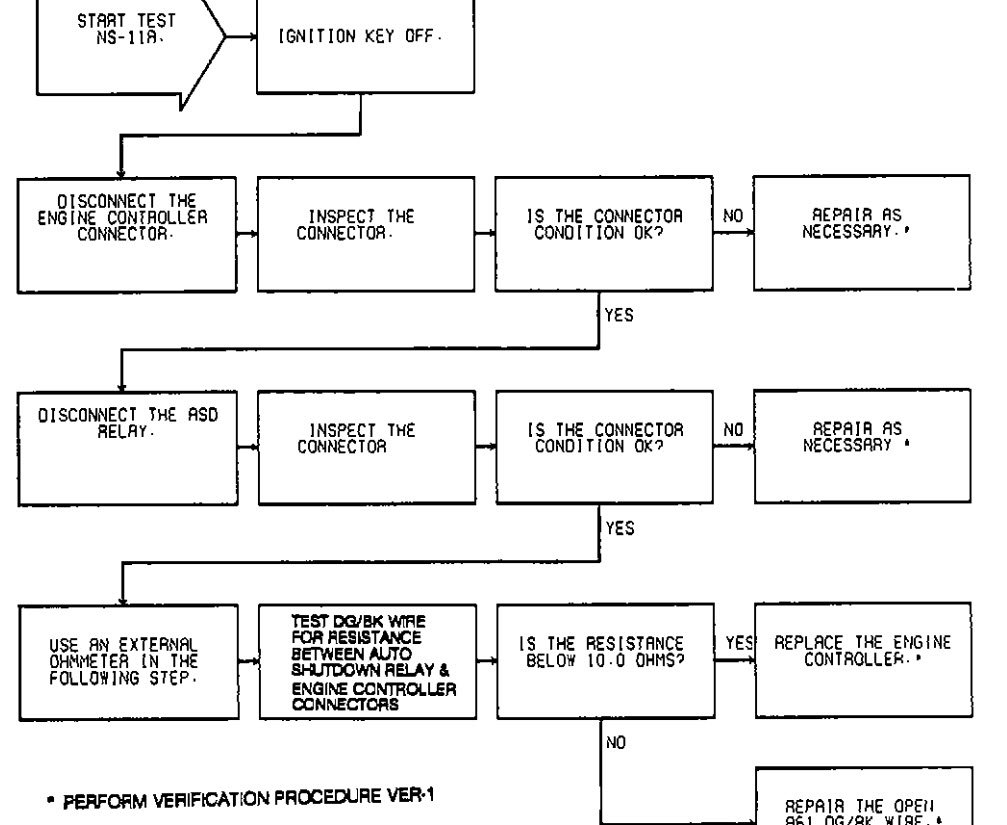Anyways, I replaced the fuel pump without checking anything else first because the car fired up as soon as I got it off the tow truck and I knew it was overdue for a pump anyways. Replaced the pump and the car still would not start. Checked for power running to the pump and it does prime. Then we checked the fuel injectors and power was going to them. Checked with a noid light and no pulses are being generated for the injectors.
So we let it sit for a few days while I did some research. Checked the code and found it was giving a Code 42 about the ASD Relay. He checked the relay (now how thorough the test was I am unsure) and apparently it is okay.
We then removed the air-box checked for any potentially obvious bad wiring which the car had some previously since this car sat outside for literally fifteen years and some critters did chew on various wires at some point. This includes unwinding all the tape, removing the housing for the wires, etc. All the way from the fuse box area to the the other side by the map sensors. There was some insulation peeled back on one of the wires running to the injectors under the air box and we checked this and it was okay. He checked the wires and the positives are reading about 6.7-7.2ohms consistently.
There was also a 2-pin connector that was not plugged into anything by the fuel injector pigtail and was being melted by the exhaust. It looks like it may have went somewhere down by the transmission. Not sure if this is for some accessory wiring or what the issue is. The car has been in a collision before and there was some ground wires it appears that were redone down by the transmission. If someone needs pictures of this damage and needs to know the wiring color for that connector I can provide it.
The large positive wire coming from the battery to the fuel box was partially cut open, exposing some of the wire and a bit of corrosion and was rubbing on the master cylinder. RTV'd the exposed area, wrapped it in electrical tape and checked all the fuses and they are checking out okay.
The car will run on starting fluid so I think we can rule out the coil, distributor, and timing belt.
One of the wires running to the MAP sensor is a bit suspect, have not replaced this yet; but the tech was saying the car should at least be able to run, maybe not very well, but still run nonetheless despite the somewhat chewed wire running to the sensor.
I disconnected the fuel lines running to the fuel filter and some fuel does come out at the initial prime and I bypassed the fuel filter to be certain that it was not plugged. If I check the fuel lines by the rails nothing is coming out but I am not sure if this is because the ASD relay is preventing the pump from doing its job.
The dealership I work at has a Chrysler location on the other end of town and I am going to see on Monday if they have a DRB-II tool with the appropriate adapter that would allow me to at least run the test to energize the fuel pump; but considering the injectors are not pulsating I do not think it is a case of a plugged line.
I very likely suspect the computer at this point; but I am not sure. I do have the official dealer manuals for the car but some of the information is a bit vague on exact diagnostics to follow to fix this issue.
Starting to run out of ideas at this point, short of replacing the computer (which I do have one coming, but I do very much dislike shotgunning parts and would like to learn from this situation) and checking the appropriate wires the 60 pin connector actually cares about to trigger code 42. I am not sure which specific wires I should be caring about.
Any help/advice is appreciated.
The car is an AJ Body for anyone who is referencing the dealer manuals.
SPONSORED LINKS
Saturday, January 21st, 2017 AT 12:03 PM

